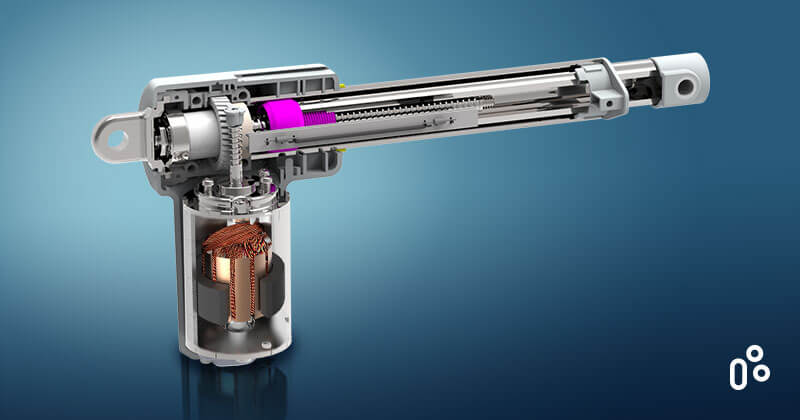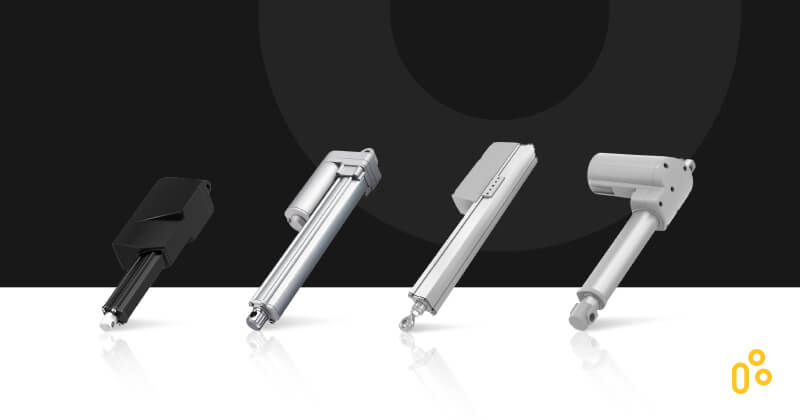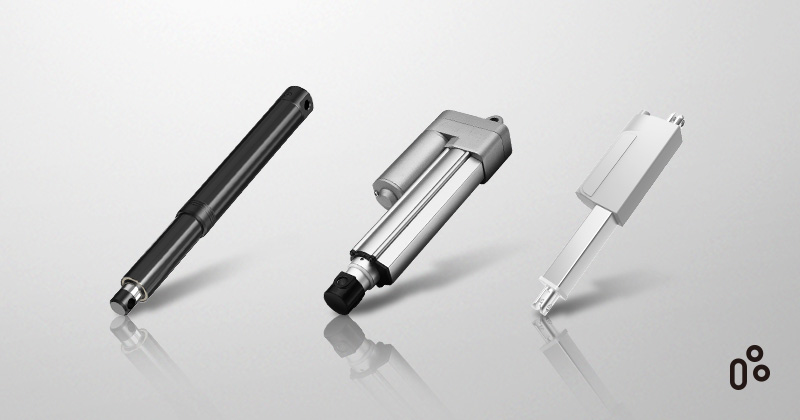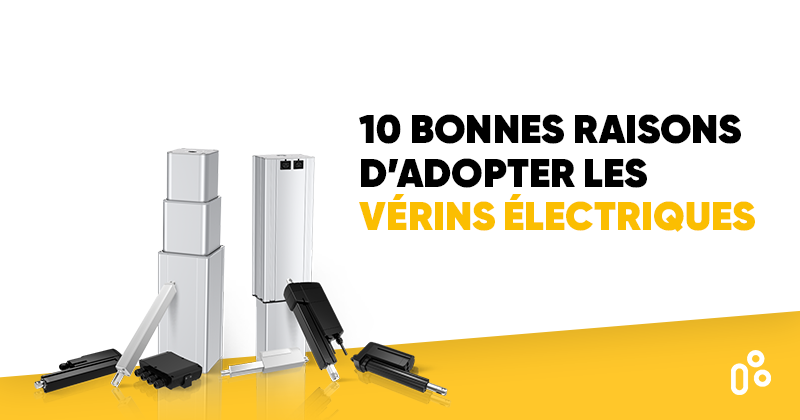2017/06/01
Partie 9 : Introduction - L'essentiel sur les actionneurs
Actualités et articles
Introduction
Les actionneurs sont au cœur des machines modernes, servant de composants essentiels dans tous les domaines, de l'équipement industriel aux systèmes de domotique. Ces dispositifs convertissent l'énergie en mouvement et jouent un rôle crucial dans divers secteurs en améliorant la fonctionnalité et l'efficacité. Cet article présente les différents types d'actionneurs, leurs applications et la manière de choisir celui qui convient le mieux à vos besoins.
Types d'actionneurs
Les actionneurs sont disponibles sous différentes formes, chacune étant conçue pour des fonctionnalités spécifiques. Il est essentiel de comprendre leurs caractéristiques et applications uniques pour l'intégration des systèmes.
Voici les principaux types d'actionneurs :
- Actionneurs électriques
- Leur fonctionnement :
Les actionneurs linéaires électriques, également connus sous le nom de vérins électriques, convertissent la force de rotation d'un moteur en mouvement linéaire. Ce processus se produit lorsque le moteur fait tourner la vis de l'actionneur, entraînant le déplacement de l'écrou vers le haut et vers le bas, créant ainsi un effet de poussée et de traction sur la charge.
- Points forts :
- Précision et contrôle : Les actionneurs électriques offrent une précision et un contrôle excellents sur le mouvement, ce qui permet un positionnement exact.
- Efficacité énergétique : Ils consomment généralement moins d'énergie que les autres types d'actionneurs, en particulier dans les applications de maintien statique.
- Peu de maintenance : Les actionneurs électriques nécessitent une maintenance minimale car ils ont moins de pièces mobiles et n'utilisent pas de fluides.
- Actionneurs hydrauliques
- Comment ils fonctionnent :
Les actionneurs hydrauliques utilisent un liquide incompressible provenant d'une pompe pour déplacer un cylindre dans un mouvement linéaire. Ce système se compose d'un dispositif de commande (comme des étrangleurs variables ou des vannes à tiroir) et d'un composant d'actionnement comme un piston, qui se déplace à l'intérieur d'un cylindre pour créer un mouvement. - Points forts :
- Capacité de force élevée : les actionneurs hydrauliques peuvent générer des forces nettement plus élevées que les autres types d'actionneurs et conviennent au levage ou au déplacement de charges lourdes.
- Robustesse et fiabilité : Ils sont bien adaptés aux environnements difficiles grâce à leur construction robuste.
- Actionneurs pneumatiques
- Leur fonctionnement :
Les actionneurs pneumatiques sont constitués d'un piston logé dans un cylindre, déplacé par de l'air comprimé fourni par une pompe manuelle ou un compresseur externe. La pression entraîne le piston le long de l'axe du cylindre, créant ainsi une force linéaire. Le piston revient à sa position initiale soit par la force du ressort, soit par l'air fourni au côté opposé du piston. - Points forts :
- Rapidité : Les actionneurs pneumatiques fonctionnent très rapidement par rapport à d'autres types d'actionneurs, ce qui les rend idéaux pour les applications nécessitant des mouvements rapides.
- Simplicité et rentabilité : Ces actionneurs sont relativement simples dans leur conception et sont moins coûteux à fabriquer et à entretenir.
Pour en savoir plus sur les avantages et les inconvénients des trois types de systèmes d'actionnement : Pneumatique, hydraulique et électrique.
Exemples d'actionneurs électriques
Les actionneurs électriques sont appréciés pour la précision de leur commande et leur efficacité énergétique. Parmi les applications courantes, on peut citer les meubles de maison réglables, les bureaux ergonomiques et les équipements médicaux sophistiqués. Dans l'industrie, ils facilitent les processus d'automatisation complexes, améliorant la productivité et la sécurité grâce à leurs performances fiables.
Exemples d'actionneurs hydrauliques
Les actionneurs hydrauliques sont essentiels dans les applications nécessitant une force importante, telles que les machines de construction et les systèmes à charge lourde. Ils fournissent la puissance nécessaire pour faire fonctionner les bulldozers, les excavateurs et d'autres machines lourdes, qui sont essentielles dans la construction et la fabrication à grande échelle.
Exemples d'actionneurs pneumatiques
Les actionneurs pneumatiques sont couramment utilisés lorsque des mouvements rapides et répétitifs sont nécessaires. On les trouve souvent dans les chaînes de montage, la robotique et la fabrication de produits pharmaceutiques, où leur simplicité et leur rapidité sont essentielles à la réussite des opérations.
Comment choisir le bon actionneur ?
Le choix du bon actionneur est une décision cruciale qui dépend d'une compréhension complète des exigences uniques de l'application et des conditions opérationnelles. Pour garantir un choix optimal, plusieurs facteurs clés doivent être méticuleusement évalués :
- Exigences en matière de charge :
Déterminer la charge maximale que l'actionneur doit déplacer. Ce facteur est crucial car il affecte l'efficacité et la durée de vie de l'actionneur. Assurez-vous que l'actionneur choisi peut supporter la charge sans solliciter excessivement sa capacité.
- Vitesse :
Tenez compte de la vitesse à laquelle l'actionneur doit se déplacer pour répondre aux exigences de votre application. La vitesse influe sur le contrôle et la précision de l'actionneur, en particulier dans les applications sensibles au temps.
- Cycle d'utilisation :
Prenez en compte le cycle d'utilisation, qui est le rapport entre le temps d'activité et le temps de repos. Assurez-vous que l'actionneur peut supporter la fréquence de fonctionnement requise par votre application sans surchauffer ou s'user prématurément.
- Exactitude et précision :
Évaluez le niveau de précision requis dans les mouvements de l'actionneur. Une grande précision est essentielle dans des applications telles que la robotique et l'aérospatiale, où les moindres écarts peuvent être critiques.
- Environnement opérationnel :
Évaluez les conditions environnementales auxquelles l'actionneur sera exposé, telles que la température, l'humidité, la poussière et les éléments corrosifs potentiels. Cette évaluation permettra de déterminer le besoin de caractéristiques supplémentaires telles que l'étanchéité ou les matériaux résistant à la corrosion.
Améliorer l'efficacité du système avec le bon actionneur
Il est essentiel de comprendre les différents types d'actionneurs et leurs applications spécifiques pour concevoir et mettre en œuvre des systèmes efficaces. L'intégration de l'actionneur approprié peut améliorer de manière significative les capacités et les performances de n'importe quelle machine.
En tant que fournisseur leader de systèmes d'actionneurs électriques, TiMOTION comprend le besoin critique de produits qui améliorent l'expérience de l'utilisateur et l'efficacité opérationnelle. Nous proposons des solutions d'actionneurs électriques linéaires personnalisables qui répondent à un large éventail de besoins industriels, en fournissant des solutions complètes qui favorisent les avancées technologiques et opérationnelles.
Contactez-nous dès aujourd'hui pour discuter de vos besoins et découvrir comment nos solutions innovantes d'actionneurs électriques peuvent améliorer vos postes de travail.










